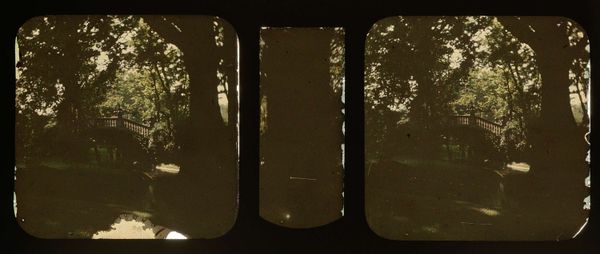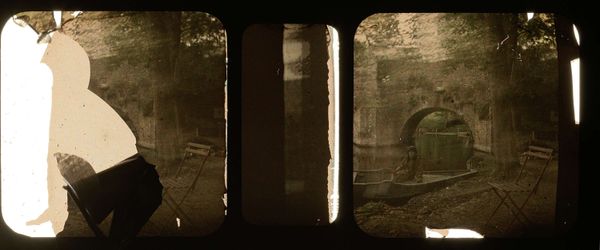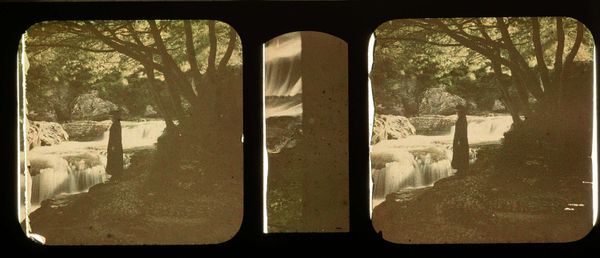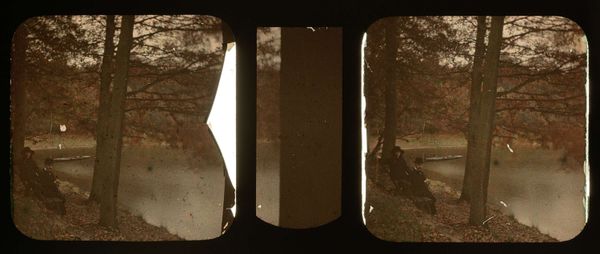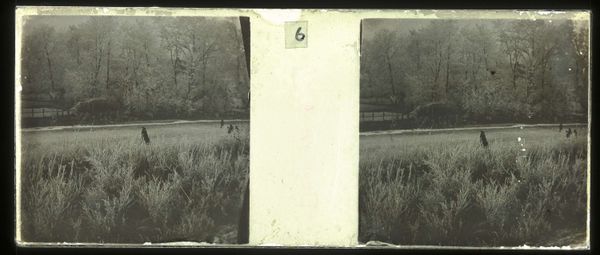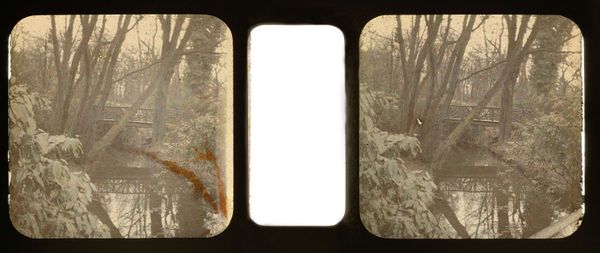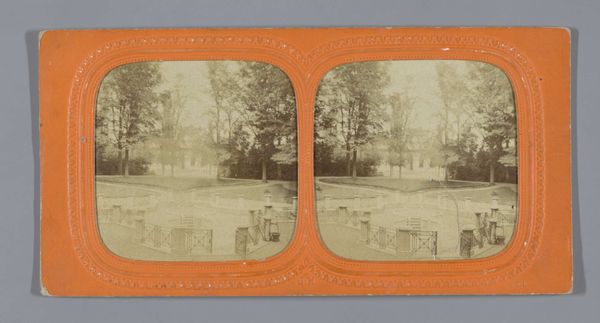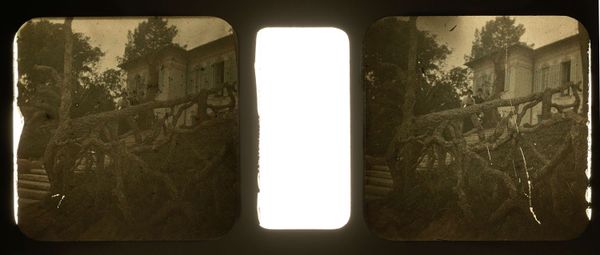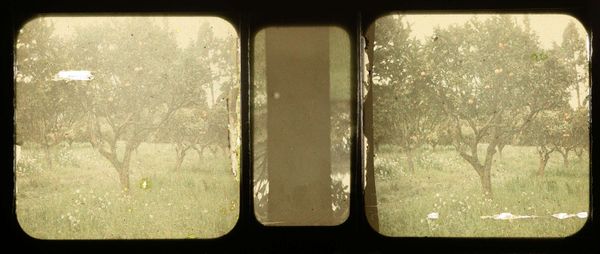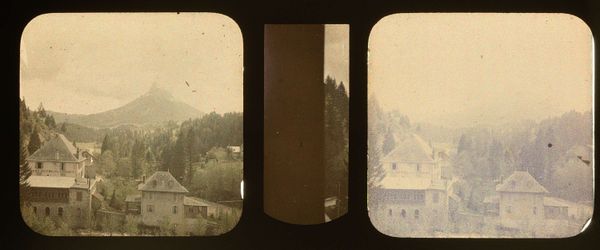
Dimensions: height 75 mm, width 150 mm
Copyright: Rijks Museum: Open Domain
Editor: So, here we have Adolphe Burdet's "Paviljoen in de bergen," which roughly translates to "Pavilion in the Mountains." It's a watercolor painting, made sometime between 1907 and 1935, and it strikes me as both peaceful and a little lonely. The soft watercolor hues create a dreamlike quality. What stands out to you in this piece? Curator: What I find captivating is how Burdet utilizes the pavilion as a recurring motif, representing shelter amidst the imposing mountains. Note how the pavilion's architecture subtly echoes the shape of the mountains. The pavilion isn't merely a structure; it becomes a symbolic stand-in for human resilience, a fragile space against the grandeur and potential harshness of nature. Don't you think? Editor: I hadn't considered the mirroring effect! I see how it repeats and balances, but resilience... That’s an interesting take. Do you think he’s pointing to the human need to leave a mark even within such powerful landscapes? Curator: Precisely! Look at the delicate brushstrokes in the trees, contrasted against the solid form of the pavilion. It tells of a deep connection to place and perhaps a cultural memory embedded in the landscape. These symbols create a powerful dialogue between human construction and the eternal presence of nature. Does it trigger personal emotions in you? Editor: I guess I hadn't thought about the layers of symbolism before. Seeing the pavilion as more than just a building opens up a whole new way of understanding the work. Curator: Indeed. It is in such nuanced layering of meaning that a simple watercolor elevates to an enduring iconographic statement, speaking volumes about humankind's intertwined destiny with the natural world. Editor: Thank you! I'll never look at a pavilion the same way again. Curator: And that, my dear student, is the enduring magic of art.
Comments
No comments
Be the first to comment and join the conversation on the ultimate creative platform.
